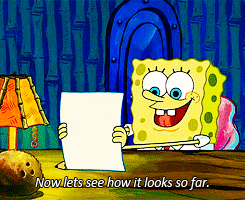“They Say, I Say” Part 3
Chapter 8 “As A Result”

In this section, Graff and Birkenstein explain how to make connections between different components of your writing in order to reinforce your main points, avoid choppiness, and stay on topic. According to these authors, one way to develop these connections is by subtly utilizing transition words to move between sentences and to combine multiple sentences together. Another strategy is to use pointing words which refer to a previously discussed concept such as “this” or “that”; however, you must be careful to make it clear what exactly is being referred to. Graff and Birkenstein also recommend repeating “key terms and phrases, including their synonyms and antonyms” throughout your writing in order to stay focused on the topic and bind the argument together (110). The final strategy provided is to repeat yourself in different words which allows you to reference previous concepts while including new information. All of these strategies result in a stronger, more effective argument readers can clearly understand.
What I Learned: I learned about the many other strategies that can be used in order to create writing that flows. I previously only knew about transition words, so being able to try out all these other methods is something I would like to do in our next essay.
Chapter 9 “You Mean I Can Just Say It That Way?”

According to this chapter, contrary to popular belief, the best form of academic writing is when everyday and academic language is used together. Combining these different styles clarifies the possibly confusing ideas you and other people are writing about. There are a variety of ways to do this. One strategy is to formally discuss a concept and then translate it into a more informal, understandable way to make it more understandable for your audience. Even during the writing process, mentally translating academic language into everyday language can reveal vague or confusing explanations in your writing or that you do not understand the concept yourself. Another strategy is to use code-meshing defined as a mixture of “standard written English with other dialects or languages” (Graff and Birkenstein 128). The decision to veer away from “standard” English opens the door for a greater variety of what can be considered standard, allows writers to grow, and results in an audience experiencing a unique way of writing than the norm.
What I Learned: I previously believed that academic writing could only be formal and utilize big, complicated words to be successful which is not the case. Being able to use everyday language seems like a lot of fun since it allows for more voice and personality to shine through in my writing.
Chapter 10 “But Don’t Get Me Wrong”

Graff and Birkenstein explain the concept of metacommentary which they define as “a way of commenting on your claims and telling others how – and how not – to think about them” (131). In other words, there is the main text which makes a statement and the metacommentary which examines this statement using previously discussed moves in They Say, I Say such as elaboration of previous concepts or answering criticism. Because of how complicated arguments and writing can be, metacommentary prevents readers from misunderstanding what is being said. It also allows you to expand on your ideas and delve deeper into your ideas, the implications they have, and different ways of looking at them. Titles and subtitles can also be categorized as metacommentary since they tell readers what your argument is going to be about. Because of this, selecting specific and effective titles is integral rather than vague ones that do not impart anything important.
What I Learned: Because of this chapter, I finally understand how important titles are. While we discussed their importance in class, I did not realize how they can affect the effectiveness of your argument.
Chapter 11 “He Says Contends”

This chapter focuses on the importance of revision in writing a quality essay and provides different templates to assist in this effort. The checklist begins with looking at whether an accurate representation of other people’s perspectives has been given. It continues to examine whether a clear position with evidence, a complete response to objections of this position, and metacommentary to further clarify this position are given. The concluding points to look at is whether the argument is all connected together and flows in its reasoning and whether an explanation was given on why this argument matters in the first place. Graff and Birkenstein provide a sample essay they have annotated from Antonia Peacocke who revised her original draft to match this checklist.
What I Learned: Usually, when I revise my essay, I just look at grammar, spelling, and if my ideas kind of make sense. Seeing the checklist of what I should look at made me realize how much work revision actually is rather than just a skim-through of my essay.

